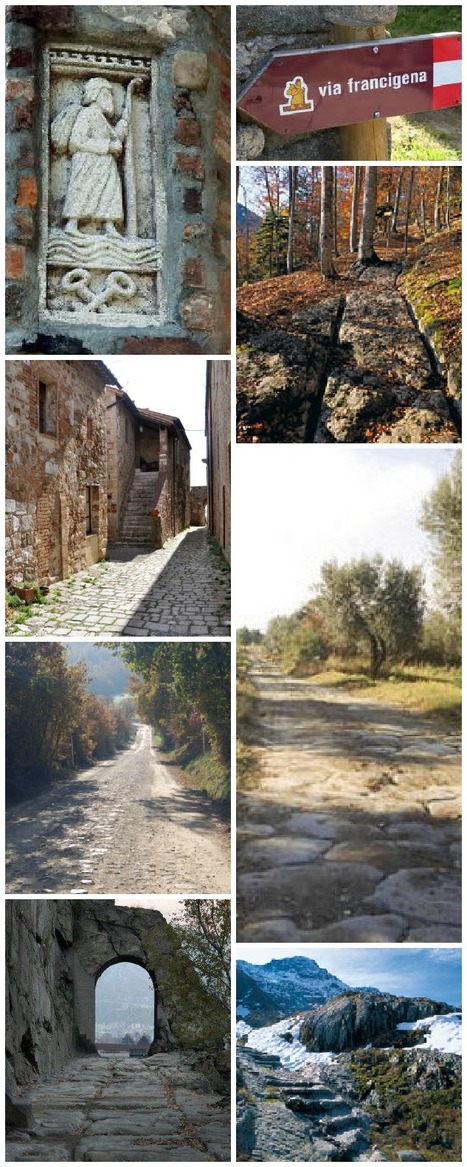The Via Francigena is a historical itinerary leading to Rome from Canterbury, a major route which in the past was used by thousands of pilgrims on their way to Rome. At the beginning of the 11th century mainly, a multitude of souls "looking for their Lost Heavenly Home" took the habit of travelling across Europe. This route bears witness to the importance of the practice of pilgrimage in medieval times; the pilgrim was to travel mostly on foot (for penitential reasons), covering about 20-25 Km a day,and was driven by a fundamentally devotional reason: the pilgrimage to the Holy Sites of Christianity. There were at the time three main centers of attraction for that journeying humanity: Rome, first of all, the site of the martyrdom of Saint Peter and Saint Paul; Santiago de Compostela, the place chosen by the apostle Saint James to rest in peace and obviously Jerusalem in the Holy Land. The pilgrim did not travel alone but in a group and he used to carry the pilgrimage emblems (the shell for Santiago de Compostela, the cross for Jerusalem and the key for Saint Peter in Rome). Along these very same pilgrim routes, an intense trading activity was carried out and armies followed the same itineraries in the course of their movements.
Circa 990 AD, Archbishop Sigeric journeyed from Canterbury to Rome and then back again but only documented his itinerary on the return journey. Sigeric's return journey consisted of 80 stages averaging about 20 km (12 mi) a day, for a total of some 1,700 km (1,100 mi).
Most modern-day pilgrims would wish to follow Sigeric's documented route in the reverse order, i.e. from Canterbury to Rome, and so would journey from Canterbury to the English coast before crossing the Channel to Sumeran (now called Sombres) landing at the point where the seaside village of Wissant now lies. From there the modern-day pilgrim must travel to the places Sigeric knew as "Gisne", "Teranburh", "Bruaei", "Atherats", before continuing on to Reims, Châlons-sur-Marne, Bar-sur-Aube, Langres, Besançon, Pontarlier, Lausanne and Saint-Maurice. From Saint-Maurice they must traverse the Great St. Bernard Pass to Aosta and from Aosta they must pass through Ivrea, Vercelli, Pavia, Fidenza, Aulla, Luni, Lucca, San Gimignano, Poggibonsi, Siena, San Quirico d'Orcia, Bolsena, Viterbo and Sutri before finally reaching the city of Rome.
Via Mariano Pallottini



 Your new post is loading...
Your new post is loading...







